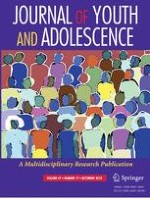27-06-2018 | Empirical Research
Patterns of Spiritual Connectedness during Adolescence: Links to Coping and Adjustment in Low-Income Urban Youth
Gepubliceerd in: Journal of Youth and Adolescence | Uitgave 12/2018
Log in om toegang te krijgenAbstract
Religiosity and spirituality are influential experiences that buffer adverse effects of stressors. Spirituality typically declines during adolescence, although not universally. Using Latent Class Growth Analysis, we examined changes in spiritual connectedness among 188 early (52% female; M age = 10.77, SD = 0.65 years) and 167 middle (56% female; M age = 13.68, SD = 0.82 years) predominantly African American adolescents participating in a 4-year longitudinal study. Three distinct profiles of spiritual connectedness emerged: low and steady, moderate with declines over the study period, and high and steady. Profile distributions varied across developmental level: there were more early adolescents in the high and steady profile and more middle adolescents in the decliner profile. Youth in the high and steady profile evidenced more goal-directedness and life satisfaction and more effective emotion management and coping strategies than youth in other profiles. Contributions to the positive development literature are discussed.
